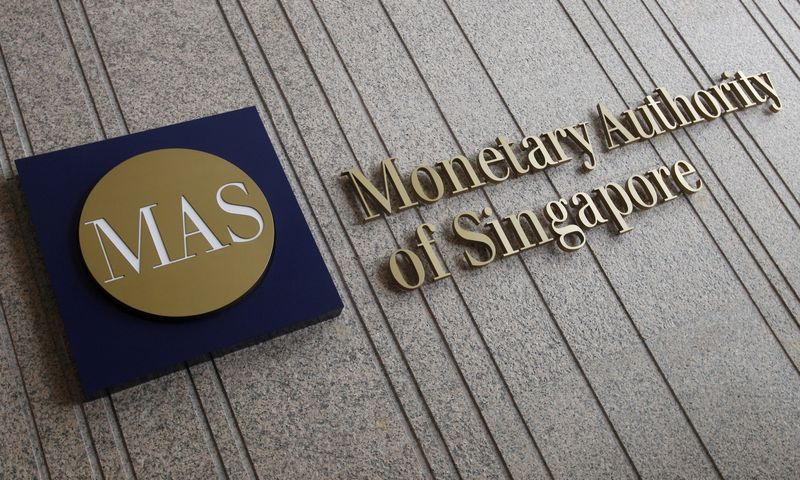(Corrects and clarifies Bank of America (NYSE:BAC) forecast.)
By Chen Lin and Aradhana Aravindan
SINGAPORE (Reuters) -Singapore's central bank is likely to tighten its policy settings at its review this month, the third time in a row, as inflationary pressures intensify due to global supply-side disruptions and an easing of the city-state's border controls.
All 15 economists polled by Reuters forecast the Monetary Authority of Singapore to tighten its policy, but they are divided on how aggressive the central bank is likely to be and which of its various settings it will change.
Instead of interest rates, the MAS manages policy by letting the local dollar rise or fall against the currencies of its main trading partners within an undisclosed band, known as the Nominal Effective Exchange Rate.
It adjusts its policy via three levers: the slope, mid-point and width of the policy band.
Of the economists polled, three expect the MAS to only raise the slope of the band, while another five expect the MAS to raise the slope of the band along with an upward re-centering of its mid-point.
"Downside growth risks due to current geopolitical tensions are manageable, in our view," ANZ economist Khoon Goh said in a research note. "Tightening resource pressures in the economy and upside inflation risks mean the MAS has to be more forceful in normalising monetary policy."
Adjusting the mid-point is typically seen as a more "aggressive" tool than only adjusting the slope, while width is usually used to control how much the Singapore dollar can fluctuate.
Five forecast the MAS re-centering the mid-point higher, with no change to the width or the slop.
Morgan Stanley (NYSE:MS) expects the slope to be steepened alongside a widening of the band -- a move last made in 2010, while Barclays (LON:BARC) is predicting a change to all three parameters.
"With the heightened uncertainty from geopolitics, the upside risk to inflation, and the downside risk to growth, we now think that MAS could undertake both a slope steepening and a band widening," Morgan Stanley analysts said.
While Bank of America only expects the slope to be adjusted, it said re-centreing is a "close call" and will "likely be calibrated", while not ruling out a band widening as well.
The central bank is expected to release its next semi-annual monetary policy statement no later than April 14.
The MAS tightened monetary policy in January this year in an out-of-cycle move, which followed a tightening in October.
February headline prices rose at their fastest pace in nine years due to higher private transport costs, while core prices eased for the first time since June last year.
The MAS is expecting core inflation to come in within 2–3% this year, up from 0.9% last year, while headline inflation is projected to average between 2.5% and 3.5%.
The government had projected gross domestic product to expand 3-5% in 2022 in a forecast provided before Russia's invasion of Ukraine.

Singapore's finance minister Lawrence Wong said in March the city-state's economy should continue to expand this year but that authorities were ready to deploy more fiscal and monetary policy measures if a worsening Russia-Ukraine crisis impacted growth and inflation.
Last month, Singapore made its biggest reopening moves from the COVID-19 pandemic, easing local restrictions and allowing vaccinated travellers from anywhere in the world to enter without having to quarantine.